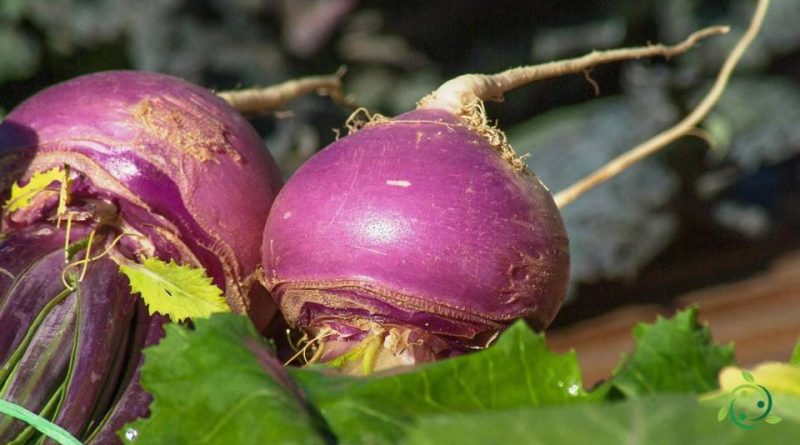Nutritional value of turnip
Nutritional value of turnip
Turnip (Brassica rapa L.) is the fleshy root, i.e. taproot, of the Brassica rapa plant, which is grown for food purposes.
Features –
The turnip is a biennial cycle cruciferous tree (annual in cultivation). In the first year it forms a fleshy root 5-10 cm in diameter, of various shapes and sizes (globose, globose-flattened, elongated); the color of the root is white – yellow, with red-violet or green shades; the pulp is white and crunchy.
The basal leaves have an elongated petiole with a whole, lobed or lyrate flap. In the second year it emits a flower stem, branched about 80 cm high with lanceolate leaves. The flowers are yellow, hermaphrodite and gathered in umbrella-like racemes; they have 4 petals, 6 stamens, a bilocular upper ovary which gives rise to a cylindrical siliqua, containing 15-20 spherical brown seeds.
Nutritional factsheet –
Turnip contains, on average: Water (94%), few proteins (1%) and sugars (4%), therefore they are low in calories;
it is a plant with a good supply of vitamin C, as well as folic acid and carotenoids, which are then transformed into vitamin A.
There are numerous mineral salts such as calcium, phosphorus, potassium, magnesium, sulfur, iodine (iron and copper are present mostly in turnip greens).
In addition to a good supply of useful fibers, turnips also contain sulfur and nitrogen compounds (thiocyanates and isothiocyanates, indoles, etc.) which stimulate the body’s antioxidant and detoxifying mechanisms.
In general, the nutritional value of turnip is rather poor: about 4% of carbohydrates, 74-81% is composed of water and some mineral salts (230 mg of potassium, 30 mg of phosphorus, 40 mg of calcium and almost as many of sodium ). The vitamin content is poor except, as mentioned, for vitamin C, of which there are more than 20 mg per 100 g of edible part.
Property –
The consumption of turnip is particularly indicated in the following cases:
– General tiredness, due to the richness of vitamins and mineral salts;
– Cystitis, kidney stones, for their diuretic and anti-inflammatory action;
– Constipation, due to the presence of fibers which, in addition to regulating the evacuation, help to eliminate the carcinogenic substances present in the intestine;
– Eczema and acne, for the purifying action;
– Bronchitis, colds, coughs and pharyngitis, because the sulfur substances thin the bronchial secretions, favoring their elimination.
Among the contraindications it should be remembered that some sulfur substances, such as isoticides and goitrins, present in the turnip, can reduce the use of iodine by the thyroid gland, interfering with the action of thyroid hormones, especially when little is introduced into the body. amount of iodine. Therefore the consumption of these vegetables is not recommended for people who have diseases or alterations in thyroid function.
The turnip is generally consumed after cooking cooked with butter or olive oil and salt or more rarely raw, even grated.

